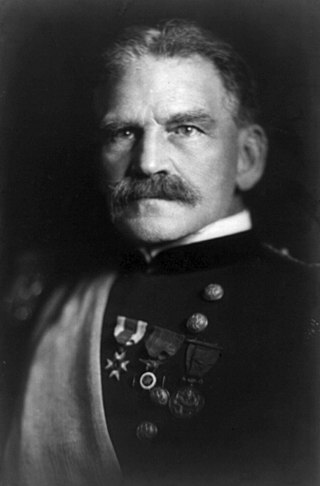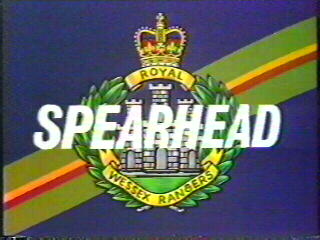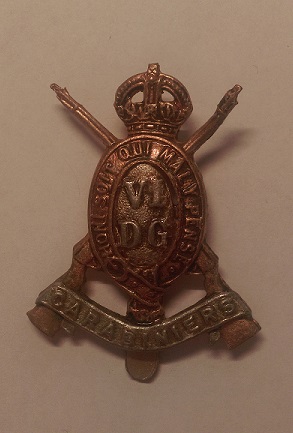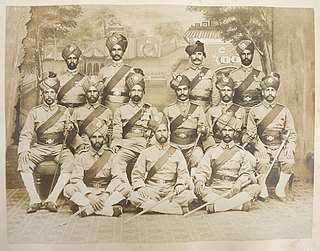
Colonel Sir Claude Maxwell MacDonald, was a British soldier and diplomat, best known for his service in China and Japan.

Colour sergeant is a rank of non-commissioned officer found in several armies and marine corps.

"Other ranks" is the term used to refer to all ranks below officers in the British Army and the Royal Marines. It includes warrant officers, non-commissioned officers ("NCOs") and ordinary soldiers with the rank of private or regimental equivalent. Officers may, in speaking, distinguish themselves from those "in the ranks".

Adna Romanza Chaffee was a lieutenant general in the United States Army. Chaffee took part in the American Civil War and Indian Wars, played a key role in the Spanish–American War, and fought in the Boxer Rebellion in China. He was the Chief of Staff of the United States Army from 1904 to 1906, overseeing far-reaching transformation of organization and doctrine in the army.

Sir Reginald Fleming Johnston, was a Scottish diplomat and colonial official who served as the tutor and advisor to Puyi, the last emperor of China. He was also the last British Commissioner of Weihaiwei. Johnston's book Twilight in the Forbidden City (1934) was used as a source for Bernardo Bertolucci's film dramatization of Puyi's life The Last Emperor.

The Green Howards , frequently known as the Yorkshire Regiment until the 1920s, was a line infantry regiment of the British Army, in the King's Division. Raised in 1688, it served under various titles until it was amalgamated with the Prince of Wales's Own Regiment of Yorkshire and the Duke of Wellington's Regiment, all Yorkshire-based regiments in the King's Division, to form the Yorkshire Regiment on 6 June 2006.

The Eight-Nation Alliance was a multinational military coalition that invaded northern China in 1900 during the Boxer Rebellion, with the stated aim of relieving the foreign legations in Beijing, which was being besieged by the popular Boxer militiamen, who were determined to remove foreign imperialism in China. The allied forces consisted of about 45,000 troops from the eight nations of Germany, Japan, Russia, Britain, France, the United States, Italy, and Austria-Hungary. Neither the Chinese nor the quasi-concerted foreign allies issued a formal declaration of war.

Sir James Haldane Stewart Lockhart, was a British colonial official in Hong Kong and China for more than 40 years. He also served as Commissioner of British Weihaiwei from 1902 to 1921. Additionally, he was a Sinologist who made pioneering translations.

Spearhead is a British television drama series. Produced by Southern Television and broadcast on the ITV network, it ran for a total of three series and 19 episodes from 18 July 1978 to 3 September 1981. It featured the daily lives of a group of soldiers in 'B' Company, 1st Battalion Royal Wessex Rangers, a fictional British Army infantry regiment.

The Carabiniers (6th Dragoon Guards) was a cavalry regiment of the British Army. It was formed in 1685 as the Lord Lumley's Regiment of Horse. It was renamed as His Majesty's 1st Regiment of Carabiniers in 1740, the 3rd Regiment of Horse (Carabiniers) in 1756 and the 6th Regiment of Dragoon Guards in 1788. After two centuries of service, including the First World War, the regiment was amalgamated with the 3rd Dragoon Guards (Prince of Wales's) to form the 3rd/6th Dragoon Guards in 1922.

Major-General Sir William Julius Gascoigne was a British Army officer and served as General Officer Commanding the Militia of Canada from 1895 to 1898.

Gorget patches are an insignia in the form of paired patches of cloth or metal on the collar of a uniform (gorget), used in the military and civil service in some countries. Collar tabs sign the military rank, the rank of civil service, the military unit, the office (department) or the branch of the armed forces and the arm of service.

The Chinese Labour Corps was a force of workers recruited by the British government in the First World War to free troops for front line duty by performing support work and manual labour. The French government also recruited a significant number of Chinese labourers, and although those labourers working for the French were recruited separately and not part of the CLC, the term is often used to encompass both groups. In all, some 140,000 men served for both British and French forces before the war ended and most of the men were repatriated to China between 1918 and 1920.
Admiral Sir James Andrew Thomas Bruce, KCMG was an officer in the Royal Navy, who was second in command of the British fleet on the China Station during the Boxer Rebellion.
The Hong Kong Chinese Regiment (HKCR) was a regiment that was raised by the British Army shortly before the Battle of Hong Kong during World War II.

Major-General Sir Hamilton St Clair Bower was a British Indian Army officer who wrote about his travels through Xinjiang and Tibet.

The Hong Kong Regiment was a British Indian Army regiment seconded to the British Army intended to form part of the garrison of British Hong Kong between 1891 and 1902. It was disbanded in 1902 following a request from the India Office owing to the cost of the regiment.

Weihaiwei or Wei-hai-wei on the northeastern coast of China, was a leased territory of the United Kingdom from 1898 until 1930. The capital was Port Edward, which lay in what is now the centre of Huancui District in the city of Weihai in the province of Shandong. The leased territory covered 288 square miles (750 km2) and included the walled city of Weihaiwei, Port Edward just to the north, Weihaiwei Bay, Liu-kung Island and a mainland area of 72 miles (116 km) of coastline running to a depth of 10 miles (16 km) inland, an area roughly coterminous with the Huancui District of modern Weihai City. Together with Lüshunkou it controlled the entrance to the Bohai Sea and, thus, the seaward approaches to Beijing.
This article deals with the rank insignia of the Austro-Hungarian Army, as worn by the Austro-Hungarian Army after the reorganisation in 1867 until 1918.

The Italian Expeditionary Corps in China was an expeditionary force the Kingdom of Italy sent to China in the summer of 1900 to assist in the efforts of the Eight-Nation Alliance to put down the Boxer Rebellion. It began to return to Italy in 1901, but some of its elements operated in China until 1905. The Italian participation in the campaign against the Boxers allowed Italy to obtain the Italian concession of Tientsin in 1901.

















